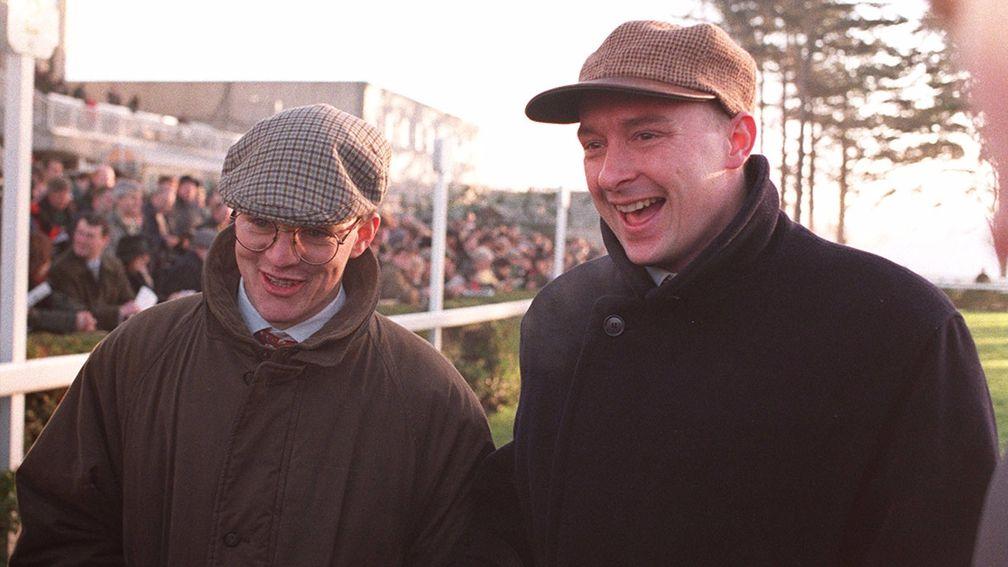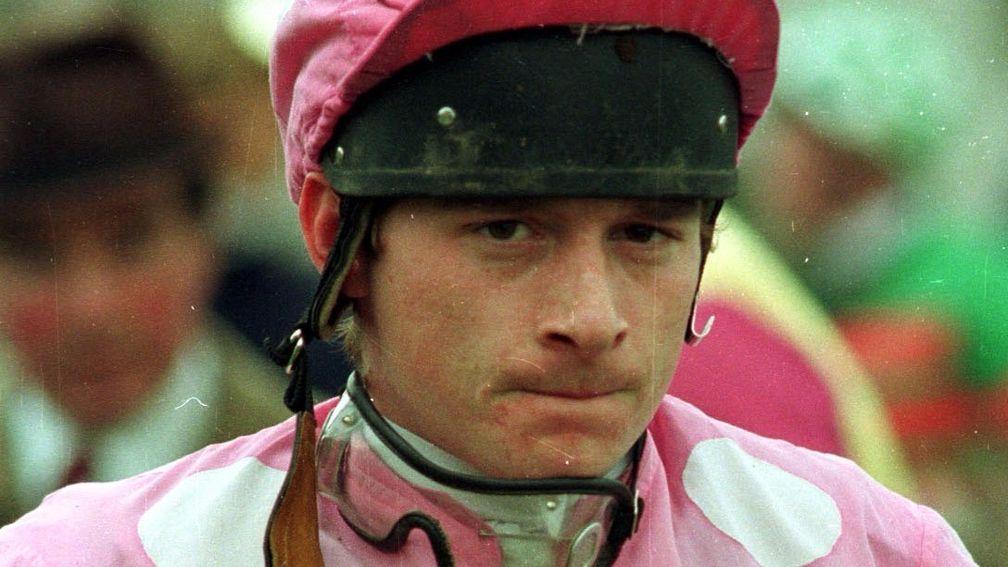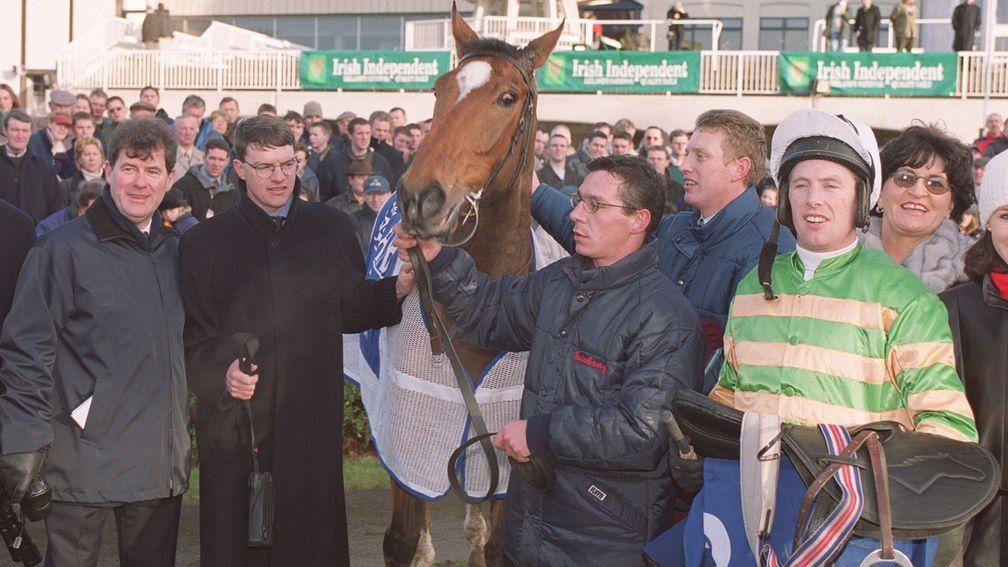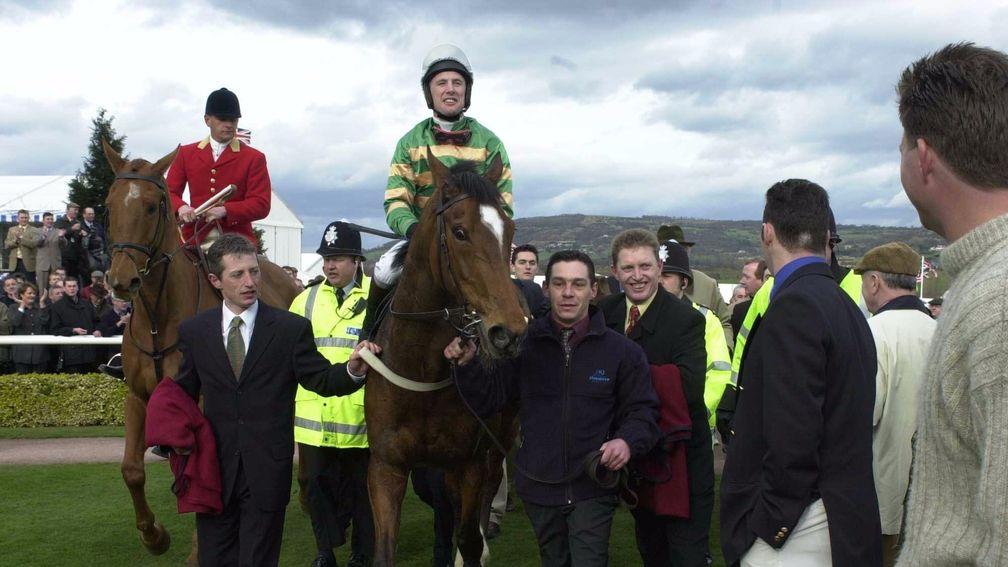Julian Muscat looks at the all-too-brief life of John Durkan

First published on Thursday, May 23, 2013
It was a classic racing education. Spells as assistant to a number of talented trainers augmented a notable riding career to place John Durkan in the vanguard of new trainers in the 1990s. Then he was diagnosed with leukaemia.
There would be no way back. Durkan’s lifelong ambition was grounded before it could fly. No-one can say whether he would have fulfilled his promise, yet while he would never saddle a horse in his own name Durkan left a tantalising, enduring reminder of his horseman’s skills.
In July 1996, one of the first inmates he bought ahead of his nascent training career was Istabraq.
The 38,000gns sales ticket was signed by Timmy Hyde, owner of Ireland’s esteemed nursery, Camas Park Stud, and Durkan’s father-in-law through his marriage to Hyde’s daughter, Carol. Durkan’s prowess around horses was proven but he was also well connected.
So too was Istabraq. Hopes were high for the colt who went into training with John Gosden in 1993. Bred and owned by Hamdan Al Maktoum, he was a three-parts brother to Secreto, winner of the 1984 Derby.
Remembering John Durkan
Born February 1967
Early career Pupil assistant to Charlie Brooks, 1988-91; assistant to Oliver Sherwood, 1991-94; assistant to John Gosden, 1994-96
Career highlights 93 winners under rules as an amateur; bought Istabraq for 38,000gns at Tattersalls Horses-in-Training sales, July 1996
Died January 1998
As everyone now knows, Istabraq would become celebrated in a different sphere. He preceded his Champion Hurdle hat-trick by winning the 1997 Royal SunAlliance Novices’ Hurdle at Cheltenham – just as Durkan predicted soon after he bought him on behalf of JP McManus.
At that time no-one could have envisaged the circumstances. Three months after Istabraq passed through the auction ring Durkan was taken ill while attending Goffs sales.
He had already told McManus with remarkable foresight: “This is no soft Flat horse, he’s the sort who does not get going until he is in a battle. He has more guts than class, and that’s what you need.”
With his career in abeyance Durkan recommended Istabraq should join Aidan O’Brien, who had just transferred his record-breaking prowess over jumps to the Ballydoyle academy. Even then, however, McManus always maintained the horse was “on loan to Aidan”. O’Brien himself declared he was “minding him for John”.
Istabraq prefaced that Royal SunAlliance triumph by winning three of his first four starts over hurdles. His sole defeat came on his debut when, after a final-flight mistake, he narrowly succumbed to Punchestown festival bumper winner Noble Thyne.
It was the only time he did not start favourite in 29 career starts over hurdles. On each occasion he was ridden by Charlie Swan.

Durkan’s condition deteriorated as Istabraq advanced on Cheltenham. Initially treated in Dublin, he was moved to the Sloan-Kettering Hospital in New York towards the end of 1996.
He was back home for Christmas, when he saw Istabraq cruise to victory in the 1st Choice Novice Hurdle at Leopardstown. But he’d returned to New York come March, when he listened to a commentary of Istabraq’s Cheltenham triumph by telephone from his hospital bed.
The following day he was taken to the operating theatre at Sloan-Kettering for a bone marrow transplant. The donor was his youngest brother, Aidan.
‘He only ever wanted to do one thing and that was train’
One of nine children, Durkan was raised on the family farm in Glencullen, on the slopes of Two Rock Mountain, south Dublin. His father Bill helped to set up a construction empire but always had a deep love of horses. Indeed, Bill ran a racing stable near his farm, with Ferdy Murphy installed to oversee the operation in the mid-1970s.
“I first met John when he was eight or nine years old,” Murphy recalls, “and even then, all he wanted was to be around the horses. He wanted to learn about legs, pedigrees, everything and he was intelligent with it.
“He was a very good pony rider and showjumper. Riding came easy to him because he was a complete natural. I remember he used to drive his mother [Beatrice] mad because she wanted him to have an education.”
Murphy remembers how his son, Barry, would join Durkan and his older brother, Danny, in building a series of fences for their ponies. “They would still be jumping them when it got dark,” he says.
“Danny and John were very close. Danny would shout instructions on how to build the fences and John would do it. Danny was into horses. He had a few rides for me, but John was something else. He only ever wanted to do one thing and that was train.”
Durkan’s saddle prowess was such that Murphy had no qualms about letting him ride the Durkan family’s best horses. “I used to ride out a lot when I first started but John quickly grew into that role,” Murphy recalls.
“When he was 12 or 13 I let him cool off Anaglog’s Daughter after exercise. Then he started doing all the pre-training work on her. His mother was concerned because he was so young, but it never bothered me. He was only a little fart of a thing but he was as strong as an ox and he already had beautiful hands.”
Not much bigger than a pony herself, Anaglog’s Daughter was a brilliant but headstrong mare who jumped like a gazelle. Her finest hour probably came when she made all to win the 1980 Arkle Chase at Cheltenham, although she posted a series of scintillating victories.
As thoughts of an education receded, Durkan – by then 19 – moved to Britain to take on the role as pupil assistant to Charlie Brooks in Lambourn. That’s how he came to live in a house already occupied by three future trainers in Ed Dunlop, Jamie Osborne and Eddie Hales.
“John was probably the most sensible among the four of us,” Osborne says. “Ed [Dunlop] was the most ridiculous, which is quite extraordinary when you think of him now, but John seemed more grown up even though we were all around the same age.
“I was trying to make a career out of riding and they worked for local trainers,” Osborne adds. “They were great days. We used to go on holiday together, everything. We were known around the village as the ‘brat pack’.”
Life was more than a lark, with Hales recalling a feeling of warm envy when spending evenings with Durkan. “John had manners and was charming,” he says. “He was good-looking, too; all the girls adored him. They came to his church but he wouldn’t anoint them, as it were. He was much too nice for that.”
Durkan subsequently moved from Brooks to Oliver Sherwood, where Osborne was stable jockey and whose string included Callisoe Bay, Coulton and Berude Not To, whom Durkan rode to win a pair of bumpers in 1994. Also in the fold was Large Action, whose two placed efforts in the Champion Hurdle highlighted qualities Durkan would later recognise in Istabraq.
In those days bumpers were the preserve of amateur jockeys and Durkan was much in demand. He rode 93 winners all told. He may also have posted a unique distinction in riding winners for both the Queen (Shaft Of Light on the Flat) and her mother (Skinhill under NH rules).

The four young bucks forged lifelong friendships in Lambourn, which Durkan left after six years, in June 1994, to become assistant trainer to Gosden in Newmarket. They remained so close that Hales and Osborne shared the role of best man at Durkan’s wedding.
“Needless to say we made a bollocks of our responsibilities but Jamie saved the day,” Hales says. “He made a brilliant speech, during which he said he wanted any son of his to grow up to become like John.”
After two seasons with Gosden, Durkan decided to take out his trainers’ licence.
“From the day I met him he knew exactly what he was going to do, how he was going to do it, and when,” Osborne says. “Everything he did was a stepping stone. The tragedy is that he served a proper apprenticeship and was all ready to go with Istabraq.”
Durkan’s plans were already well advanced. Having secured Green Lodge Stables in Newmarket from Tom Jones, who had just retired, he set about finding suitable horses. He’d ridden Istabraq at home before the four-year-old came up for sale. A sensation intangible to most had plainly transmitted through the reins.
‘I owe him a sincere debt of gratitude and he is still sorely missed’
By the time Istabraq won the Royal SunAlliance Hurdle at the 1997 Cheltenham Festival, Durkan probably knew his aspirations to train the horse would go unfulfilled.
Istabraq followed that Cheltenham triumph by romping to an imperious victory at the Punchestown festival, after which O’Brien gave him a summer’s break.
Another bloodless victory at Tipperary in October endorsed his Champion Hurdle claims, which he sought to further advance in the Hatton’s Grace Hurdle the following month.
By then Durkan had returned from New York to be among family and friends. Despite his frail state he accompanied McManus to Fairyhouse and saw Istabraq put up another virtuoso performance to outclass Cockney Lad. It was the last time Durkan would see his pride and joy on the racecourse.
In January 1998, four days before the Irish Champion Hurdle, Durkan’s body gave up the unequal struggle. Inevitably, a profound sense of grief accompanied Istabraq’s connections to Leopardstown. Words were difficult in the wake of his victory.
Those present remember the occasion in sombre terms. Swan wore a black armband while Durkan’s widow, Carol, collected the trophy. The man who should have been saddling Istabraq to victory had instead been laid to rest in the cemetery at Glencullen 24 hours earlier. He was 31 years old.
Hales recalls all the tears for Durkan had been shed before his funeral. The occasion offered the opportunity to remember him as he was in his prime: a man seemingly destined to ascend the training ladder with the same effortless ease that characterised his time in the saddle.

“John was buried up a mountain in one of the coldest places in Ireland,” Hales relates. “It gave us something to talk about as we carried his coffin up to the graveyard, because John always hated the cold.
“The hill was so steep that we had to stop to catch our breath,” Hales continues. “We’d got to know John’s brothers well over the years and we were all breathing hard when one of them said to us: ‘Jesus, I hope you don’t get the call-up for this when Charlie Egerton pops his clogs’.
“Well, we all laughed at that. It was exactly the sort of thing John would have said.”
But Durkan is remembered by more than memories. The year of his death saw the inauguration of the John Durkan Memorial Punchestown Chase at the December meeting, while the John Durkan Leukaemia Laboratories at St James’s Hospital, Dublin, was opened by the Taoiseach, Bertie Ahern, in 2003 after a €2.7 million donation from the John Durkan Leukaemia Trust Fund.
And of course, Istabraq’s hat-trick of Champion Hurdle victories has a permanent place in the record books. Durkan’s name may not sit alongside that of Istabraq but his spirit is evoked by a hurdler who the public nominated as their fourth favourite horse of all time in the Racing Post’s 100 favourite racehorses poll.
“But for John I would never have been fortunate enough to own Istabraq,” McManus told this newspaper five years ago. “As a mark of the man, when he became ill and realised he was not going to be able to train the horse, he suggested we send Istabraq to Aidan. I owe him a sincere debt of gratitude and he is still sorely missed by all of us.”
‘You don’t often come across people like him’
WHAT JOHN DURKAN MEANT TO ME
Ferdy Murphy
I don't think there was ever anyone more dedicated to horses or more ambitious and I mean that in the right way.
John would get himself involved in everything to do with the family stables, from riding the horses to reading about them. He even threw himself into helping us build the gallops, because that was his way.
The [Durkan] family yard was a lovely place for anyone to grow up. Although they were builders by profession, horses were the main thing. Everything revolved around horses.
I remember how excited John was in 1981 when we took him to Aintree for the first time with Carrow Boy, a horse owned by his father who ran in the Grand National.
We took a photograph of John and [older brother] Danny standing by Becher’s Brook in the days when that fence was a true fence. The photo was hung up on the wall in their parents’ house.
Towards the end of his teens it was obvious John would train horses for a living, so I arranged for him to go to Charlie Brooks. And when I moved to England to start training, John rode a lot for me. He stole a lot of races.
John was an incredible young man with a great personality. I’ve no doubt he would have been a brilliant trainer and anyone who knew him would tell you the same. You don’t often come across people like him.
Members can read the latest exclusive interviews, news analysis and comment available from 6pm daily on racingpost.com
Published on inRP Classics
Last updated